Continuing a multi-year partnership with The American Chestnut Foundation, Unity College students and faculty will assist in large-scale restoration of the species by growing and planting American chestnut seedlings in a statewide series of field experiments this spring.
The American chestnut is classified as a tree of special concern in Maine due to the devastating effects of a blight accidentally imported to the East Coast more than 100 years ago.
Unity College students will engage in planting American chestnut seeds from all parts of the tree’s native range as part of a hands-on lab activity with Dr. Matthew Chatfield, Assistant Professor of Conservation Biology in the Unity College Center for Biodiversity.
The exercise will take place from 3 to 5 p.m., Monday, March 7, and 12:30 to 2:30 p.m., Thursday, March 10. Volunteers with the Maine Chapter of The American Chestnut Foundation, along with faculty and staff from Unity College, will be on hand to answer questions about the project from 2 to 3 p.m., March 7 at McKay Farm & Research Station, 54 Greenhouse Lane, Thorndike.
McKay Farm & Research Station is a Unity College facility that provides hands-on resources in sustainable entrepreneurial agriculture to campus and community. The out-planting of the seedlings will take place in June by Unity College students and volunteers from the Maine Chapter of The American Chestnut Foundation.
“The plan is to teach Unity students about reintroduction and restoration, showing them that what they learn in the classroom can be applied in the real world,” Chatfield said.
The effort comes less than a year after America’s Environmental College held a ceremonial tree planting of a potentially blight-resistant chestnut tree on Earth Day 2015. It is envisioned that more chestnut trees will be planted on campus in the future.
“This is Unity College education in action,” said Unity College President Dr. Melik Peter Khoury, “where highly qualified faculty partner with organizations such as The American Chestnut Foundation to bring meaningful, field-based research to undergraduate students. The result is not just the teaching and learning of conservation knowledge and ethics, but also restoration of a historic and biologically significant American tree species.”
In the year 1900, there were more than 4 billion American chestnut trees in the Appalachian mountains from Maine to Alabama, approximately one of every four trees in the Appalachians.
The American chestnut (Castanea dentate) can grow more than 100 feet tall with a diameter of as much as 14 feet. They have canoe-shaped leaves with small hooks along the edges, and they bloom in July, producing so many white catkins that a tree might look like it is covered with snow. In the fall, they produce very prickly round burrs, each of which contains three edible chestnut-colored seeds. European and Asian chestnut trees produce larger nuts that lack the sweetness of the American variety.
The chestnut blight fungus (Cryphonectria parasitica) was accidentally introduced into America at the beginning of 20th century, and the American chestnut became functionally extinct. The fungus attacks wounds in the bark of a tree, forms cankers, and eventually girdles the tree, killing all but the root system.
Since 1983, The American Chestnut Foundation has been working to restore this iconic species for many reasons, including:
- American chestnuts produce a sweet, highly nutritious, gluten-free food;
- American chestnuts are a important and reliable source of food for deer, bears, turkeys, birds, and squirrels;
- American chestnuts are late flowering and produce abundant nut crops because they avoid late frosts;
- American chestnut wood is highly rot-resistant wood with a straight grain that resembles oak but weighs far less;
- For a hardwood species, the trees grow rapidly in the right conditions; and
- American chestnuts have proven valuable in reclamation of areas devastated by coal strip mining.
“It was called the cradle-to-grave wood,” Glen Rea, the northern breeding coordinator for the Maine Chapter of the American Chestnut Foundation, told the Bangor Daily News. “Cradles, tables, beds, caskets, all were made of chestnut.”
Last summer, University of Maine researchers found the tallest American chestnut in North America in a forest owned by the University of Maine Foundation in Lovell, near the New Hampshire border. The discovery of the 115-foot tall tree was “thrilling to the people who are trying to bring back the species,” Rea said.
The American Chestnut Foundation, a nonprofit group based in North Carolina, wants to breed blight resistance from the Chinese chestnut tree into the American chestnut, while keeping the American tree’s characteristics.
In Maine, volunteers joined forces with the national group in 1999 and have planted 27,000 blight-resistant hybrid chestnut trees in seed orchards around the state. In the next few years, they plan to plant 27,000 more trees, Rea told the Bangor Daily News. The seed orchards will be located in Searsport, Stetson, Phippsburg, Winthrop, Lovell, Unity, and Morrill, Rea said.
“We’re proud to be able to take part in the renewal of a beautiful tree indigenous to New England, right here on our campus in Unity,” Chatfield said.
The American Chestnut Foundation is a nonprofit conservation organization working to restore the American chestnut species to its native range, the eastern woodlands of the U.S. For more information about TACF, call Ruth Goodridge at (828) 281-0047; email ruth.goodridge@acf.org; or go online www.acf.org or www.facebook.com/americanchestnut.



